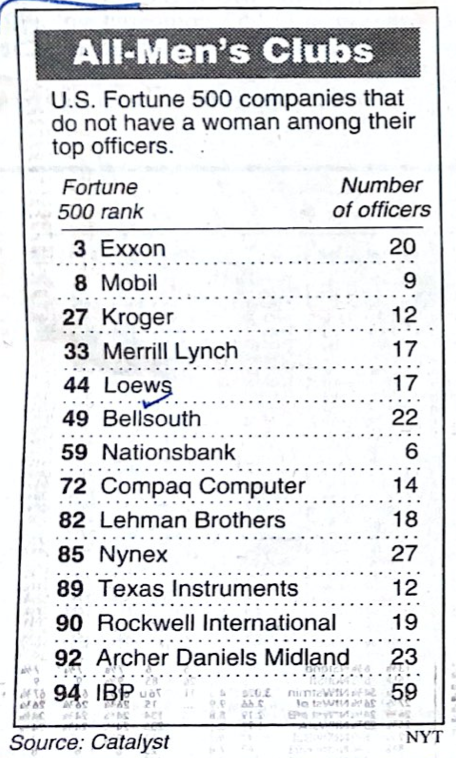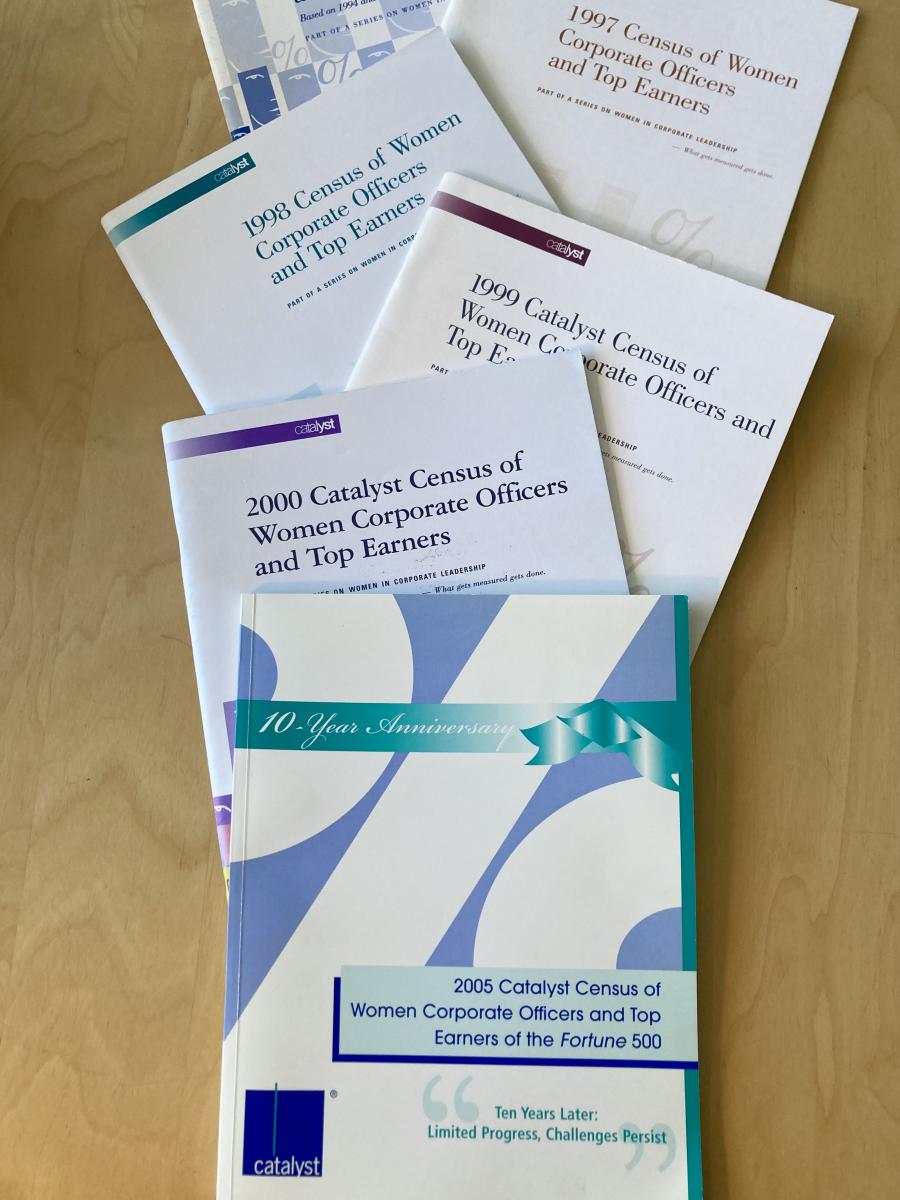Catalyst Inc. aims to conduct influential research studies related to women in the workplace and share their findings widely with other organizations and institutions, businesses, and the public. Over the years, the organization has met this objective in part through print media, like newspapers, magazines, journals, and other periodicals reference and report on Catalyst research. The annual Catalyst Census of Women Corporate Officers and Top Earners of the Fortune 500 (COTE) serves as a striking example, becoming one of the most widely discussed Catalyst studies in the news since its launch in 1995.

Many people in the 1990s believed that women had successfully entered the highest ranks of corporate America. Catalyst wasn’t so sure. By analyzing the annual reports and proxy statements of U.S. Fortune 500 companies, Catalyst researchers determined the number of women “among corporate America’s highest-ranking and highest-paid executives” and released their findings in the annual COTE.[1] It wasn’t pretty. It became clear to Catalyst that Fortune 500 companies needed to be held accountable for the lack of women that occupied their top positions and took home their biggest paychecks. And hold them accountable they did. In October 1996, many newspapers printed a version of the table pictured below, which listed the names of Fortune 500 companies without a single woman among their top officers. Other issues frequently discussed by the media in relation to Catalyst’s annual COTE included the lack of women in “line officer” jobs that typically led to promotions, the income gap between corporate men and women, and the glass ceiling concept.

In 2005, Catalyst published the 10-Year Anniversary edition of the COTE. In its Forward, then-president Ilene Lang noted that while Catalyst celebrated the achievement of tracking women in the Fortune 500 for a decade, they found “little to celebrate in the data.”[2] While women had made gains since 1995, progress had reached a standstill. Fortune 500 companies were still not effectively recruiting, supporting, or promoting women. Albeit disheartening, the straightforward air with which Ilene Lang delivered this news mirrors Catalyst’s ongoing dedication to their original objectives. Catalyst continues to research and report on women in the workplace despite underwhelming trends and share their findings in hopes of holding corporate America accountable and inspiring change. We’ll feature more stories from the collection as work continues. The collection is anticipated to be opened for researchers in 2022.

Peyton Cleary is a graduate student at the University of Delaware serving as the 2021-2022 Graduate Assistant for Hagley Library.
